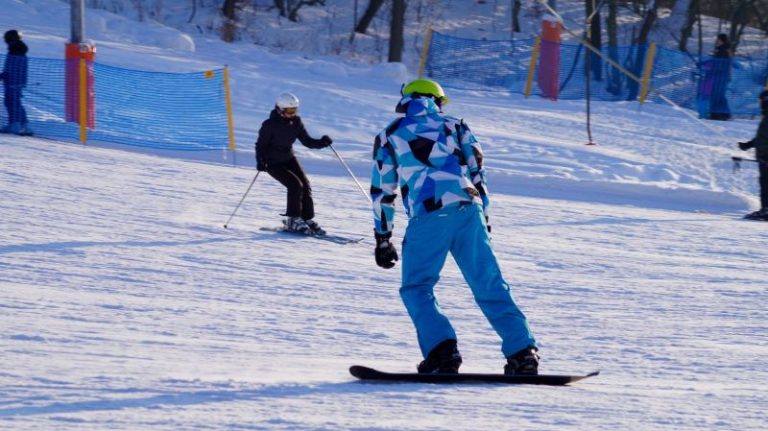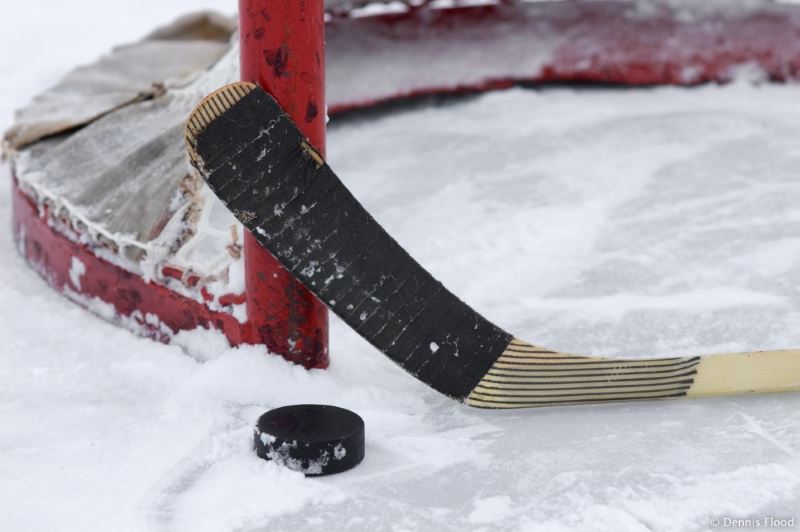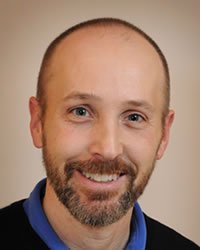Sports
This is the time of year where you are starting to ramp up your training for triathlons and running races. It has been shown that as many as 80% of runners sustain a running-related injury in a given year. So what are the reasons for so many running injuries? And how can they be avoided?
Training schedule, running technique, and tissue strength/tolerance are three major determinants as to whether or not you will be sidelined with an injury this season.
Here are more detailed explanations of the three common causes for injury:
Too much too soon. An overly ambition training schedule is a classic mistake. It is believed that as much as 80% of running injuries occur because of training errors. An easy to follow guideline is the 10% rule: avoid increasing your running mileage more than 10% from the previous week.
Poor or inefficient running technique. A potential cause for injury is technique, or rather, a poor technique. It can result in too much impact too quickly (vertical loading rate) as you land. A high vertical loading rate can be caused by any of all of the following: heel striking with your foot too far in front of your hips (over-striding), a lack of bend in your knee or hip during landing, a lack of strength in core/hip musculature to help absorb impact. Instead, gradual increased training in a flatter/minimalist shoe (to reduce heel striking), increasing step cadence to approximately 180 steps per minute, and aiming to land softer or ‘quieter’ are all ways of reducing tissue overload.
Core and hip muscle weakness. It has been shown that a lack of gluteal muscle strength can lead to increased stress on the knee and foot, resulting in a greater chance of tissue breakdown. Taking part in a consistent individualized strengthening program throughout the year can be a key component to avoiding injury.
Remember, don’t wait until minor aches and pains turn into significant injury. Every runner is different, so book an appointment with Sun City Physiotherapy to determine how best to avoid injury this season. Call 250-861-8056 to book your appointment today.
Sports
Swimming has a relatively low risk of sport related injury, yet, swimmers often complain of shoulder pain. This can be caused by muscle overuse and incorrect technique. By making stroke adjustments, you can not only minimize pain and prevent injury, but also improve performance.
The Physiotherapy Association of British Columbia (PABC) recently outlined some simple steps, call the Physio-4, that swimmers can use to reduce their chances for injury, prevent pain, and swim more effectively.
The Physio-4 for swimming:
Be mindful of body rotation. Never swim with a “flat body” as this limits the rotation of the shoulder along the axis of the spine. Develop a symmetrical way to rotate your body for an efficient breathing pattern and this will greatly reduce the risk of shoulder injuries.
Enter the water with a flat hand. A hand directed outwards when entering the water leads to unhealthy internal rotation. This is one of the most common causes of acute pain in the shoulder as it overuses the muscles. It is best to enter the water with a flat hand, fingertips first.
Maintain good posture. The saying “shoulders back, chest forward” applies both in and out of the water. Hunched or rounded shoulders can lead to a wide arm recovery that causes shoulder injuries and “cross-overs” in your stroke. Strengthening the muscles at the back of the shoulder and stretching those at the front will help prevent injury, and help you to swim faster.
Incorporate bilateral breathing into your swim workout. Breathing only on one side will develop the muscles on that side more than the other. This can eventually lead to shoulder problems. By breathing on both sides with every workout you can prevent this from happening.
Aside from these injury-prevention techniques, there are important things to remember when swimming outdoors. Never dive head first into water unless the depth is known. When swimming in lakes or oceans be aware of any natural hazards such as tides and rapids, never swim alone, and always let someone know where you are training. And always be mindful of boaters – because they may not always be looking for you.
If you are injured or in pain during or after swimming, or require an exercise program to help avoid or overcome shoulder injury, Sun City Physiotherapy can help. Call 250-861-8056 to book your appointment today.
Sports
Attention Curlers!
The curling season has now come to an end, and most of us won’t step onto the ice again until fall. If you spent any part of the past season haunted by joint or muscle pain, this is the perfect time to do something about it. Absolutely every professional athlete knows that the off-season is the time to rebuild strength and recover from injury. Whatever your age and physical activity level, this same principle applies to you.
Curlers are most likely to experience pain in their shoulders, back or knees. This pain is most likely to affect either the delivery phase or the sweeping phase of the game. Sometimes it can take hours or even days after playing for the pain to subside, or it may lead to the use of pain medications. Pain is a big deal because it can stop your muscles from generating power and can affect your enjoyment of the game. Unfortunately, if not properly addressed, this pain can go on for years, getting worse and worse until it eventually leads to retirement from the sport.
Many of the aches and pains that we experience as curlers originate from a common source: muscle imbalance around the legs, back and shoulders. By building strength and flexibility in our muscles, it’s possible to achieve a consistent, balanced delivery and powerful sweeping. For example, a powerful push from the hack uses the strength in your quads while effective sweeping requires strong deltoids and latissimus dorsi. Conversely, weakness in your quads or tightness in the hip flexors will prevent you from getting low enough to be balanced and effective in your delivery.
The solution to this problem must include building strength and lengthening tight muscles. Since this takes time to do, it can be difficult to achieve during the curling season. A proper, targeted stretching and strengthening program, provided by your Physical Therapist, during the off season will make you a better shot maker while at the same time eliminate distracting aches and pains. By consulting with your Physical Therapist early in the off season, you’ll be giving yourself the best chance to return to the ice in the fall as a stronger and more comfortable athlete.
Rob Heimbach is a registered physiotherapist and associate at Sun City Physiotherapy’s Glenmore location. He can be contacted at glenmore@suncityphysiotherapy.com.
Sports
If you’re a regular league curler, whether recreational or competitive, then you’re surely familiar with the aches, pains and injuries that go hand-in-hand with the sport. Joints and muscles at the knees, back and shoulders are most vulnerable to injury. The good news is that by taking the following three preventative steps, you can minimize your chances of injury and maximize your enjoyment of curling this season!
Number one on my list is proper equipment. I can guarantee that if you curl long enough you’re going to fall once or twice. Over 90% of curling injuries result from a slip and fall. If you’re on the ice with any regularity, it’s worth ditching the runners in favour of a proper gripper and slider. Beginner curlers and young curlers in particular should also consider wearing a helmet when starting out. Scary fact: when you fall, your head is the body part that’s most likely to hit the ice first!
Number two is a proper warm up. But wait, there’s a twist. You need to actually get WARM. You need to increase your heart rate and body temperature! If you think that I’m stating the obvious, just look around at all of the curlers casually chatting or gently stretching before going on the ice. These activities will only warm you up if you’re doing them on a hot beach or in a hot yoga studio. Start by running on the spot, high-knees, butt-kicks, or doing jumping jacks. Follow that up with some curling-specific stretches including the legs and trunk, and you’ll be ready to hit the ice.
My third and final tip is this: get a qualified coach to take a look at your mechanics. I remember the first time that I saw my delivery and sweeping on camera, I was shocked at how awkward I looked! I’m not saying that you’re in the same boat; you might be perfect. But you may not look as good as you think you do. If you aren’t already getting regular coaching, an instructor can provide you with some insight into your technique. Improving your delivery and sweeping by optimizing the way that you load your joints and muscles will improve your performance and prevent overuse injuries. You’ll play better, and feel better doing it!
Keep these three points in mind and with any luck you’ll make it through the curling season with little to no time missed due to injury! If you do happen to run into any issues along the way, keep in mind that a visit to a physiotherapist can help you to get back on track. Happy curling in 2016!
For more information on curling injuries, prevention and exercise, join us for a free informational talk on Tuesday, January 26th at 6:30 at Sun City’s Glenmore location. Call 250-762-6313 to reserve your seat.
Rob Heimbach is a registered physiotherapist and associate at Sun City Physiotherapy’s Glenmore clinic. He can be contacted at 250-762-6313 or email glenmore@suncityphysiotherapy.com

Sports
Ski and snowboard season is here!
I’m sure many of you skiers out there have already started to dust off your equipment, check the daily snow report and maybe even head to the mountain for some early season skiing.
We are fortunate in Kelowna to have so many great ski resorts nearby. Skiing and snowboarding are great ways to get some fresh air and exercise when it can be a challenge to stay active in Kelowna through the fall and winter. This is especially true lately when it has been so wet, cold and dark outside. Since most outdoor activities have wrapped up for the summer, I think that this is the perfect time of year to start conditioning your body in preparation for the upcoming ski season, if you are not already doing so. A good exercise program which addresses core and hip stability, balance, flexibility, muscle endurance and aerobic conditioning will go a long way to help improve your endurance and technique on the mountain to help you get the most out of your season.
If you are currently recovering from an injury or if you have just been sedentary for some time and are noticing a lack of strength, balance, range of motion or overall conditioning, it can be very useful to engage in a progressive rehabilitation exercise program prior to doing something more demanding on your body, like hitting the slopes for the day.
In the clinic, it is not uncommon to see overuse or traumatic injuries pop up as a result of unresolved muscle weakness, due to injury or sedentary behaviour, followed by more demanding or intense exercise. This excessive demand could come from lifting very heavy weights, running too fast or too far, attending an advanced exercise class or participating in a full day of winter activities. While the above examples may very well be a realistic long term goal, you may be putting your body at an increased risk of injury if you engage in an activity that your body is not adequately prepared for.
Exercise needs to be consistent and frequent, rather than all or none. Set a goal to exercise small amounts each day. An exercise program should include a combination of core stability, strengthening, stretching, balance training and aerobic conditioning.
If you are currently recovering from an injury or if you have been inactive for some time and are not sure where to begin, a physiotherapist can help get you on the right track, by developing a safe and effective individualized home exercise program based on your specific goals and current ability.



